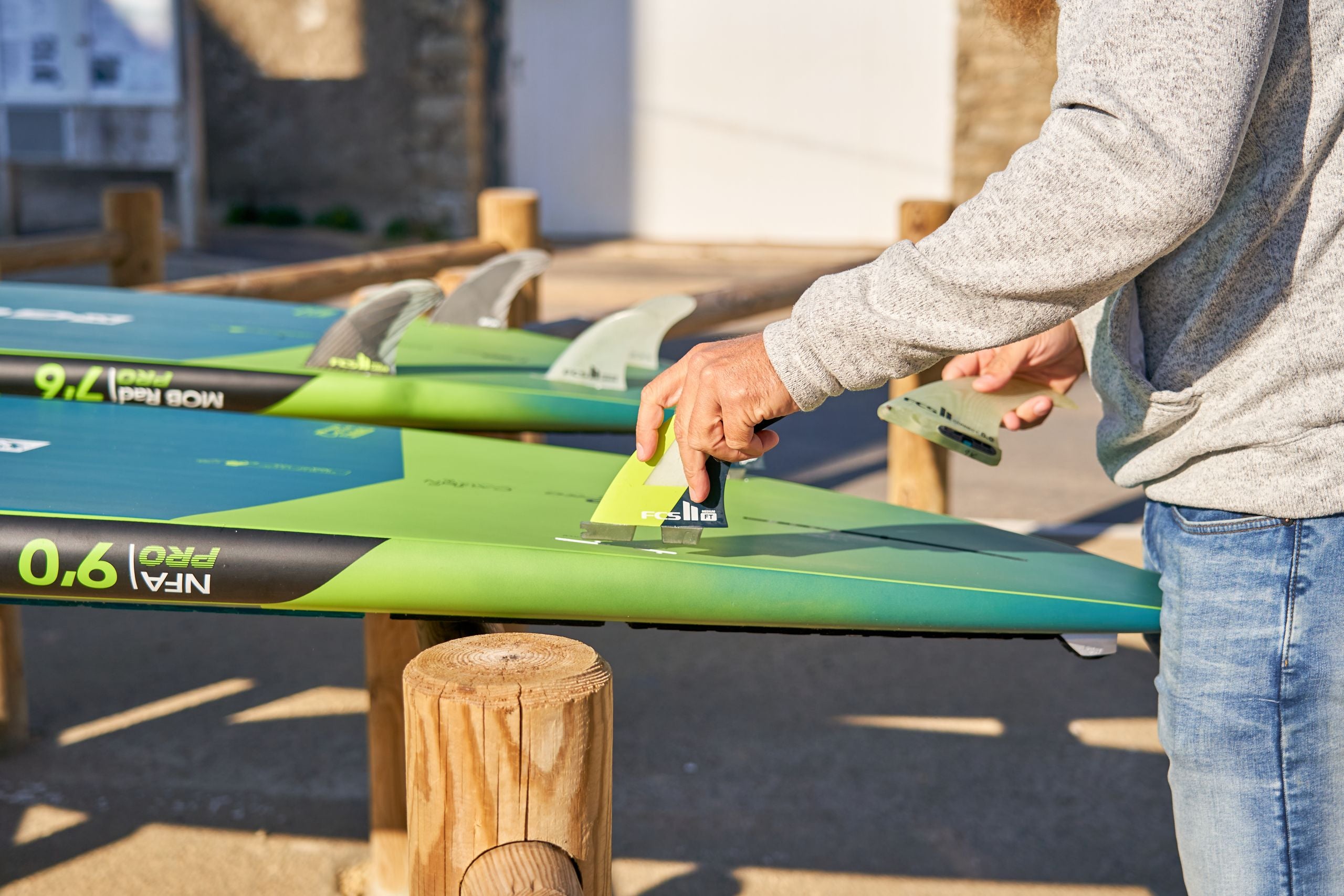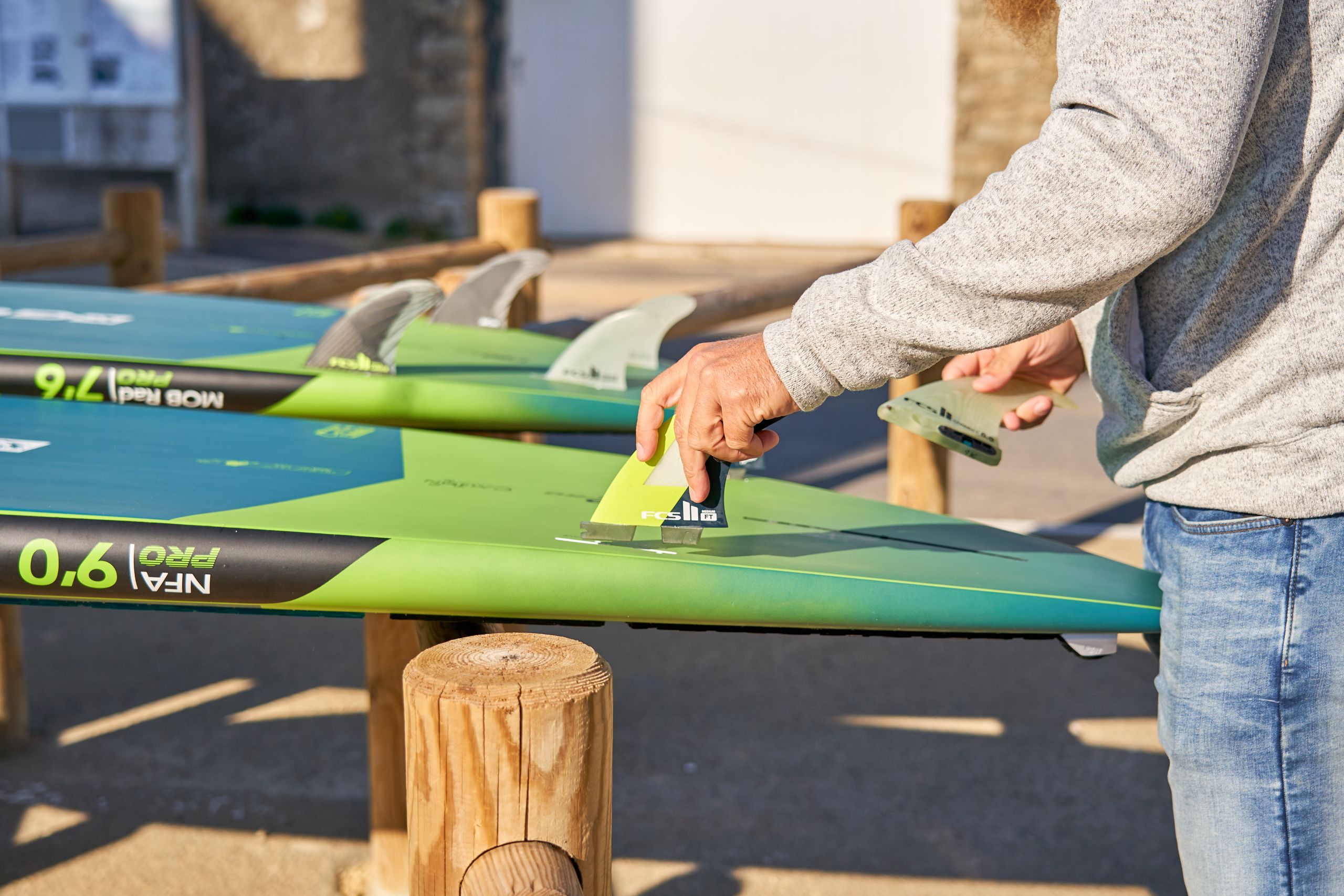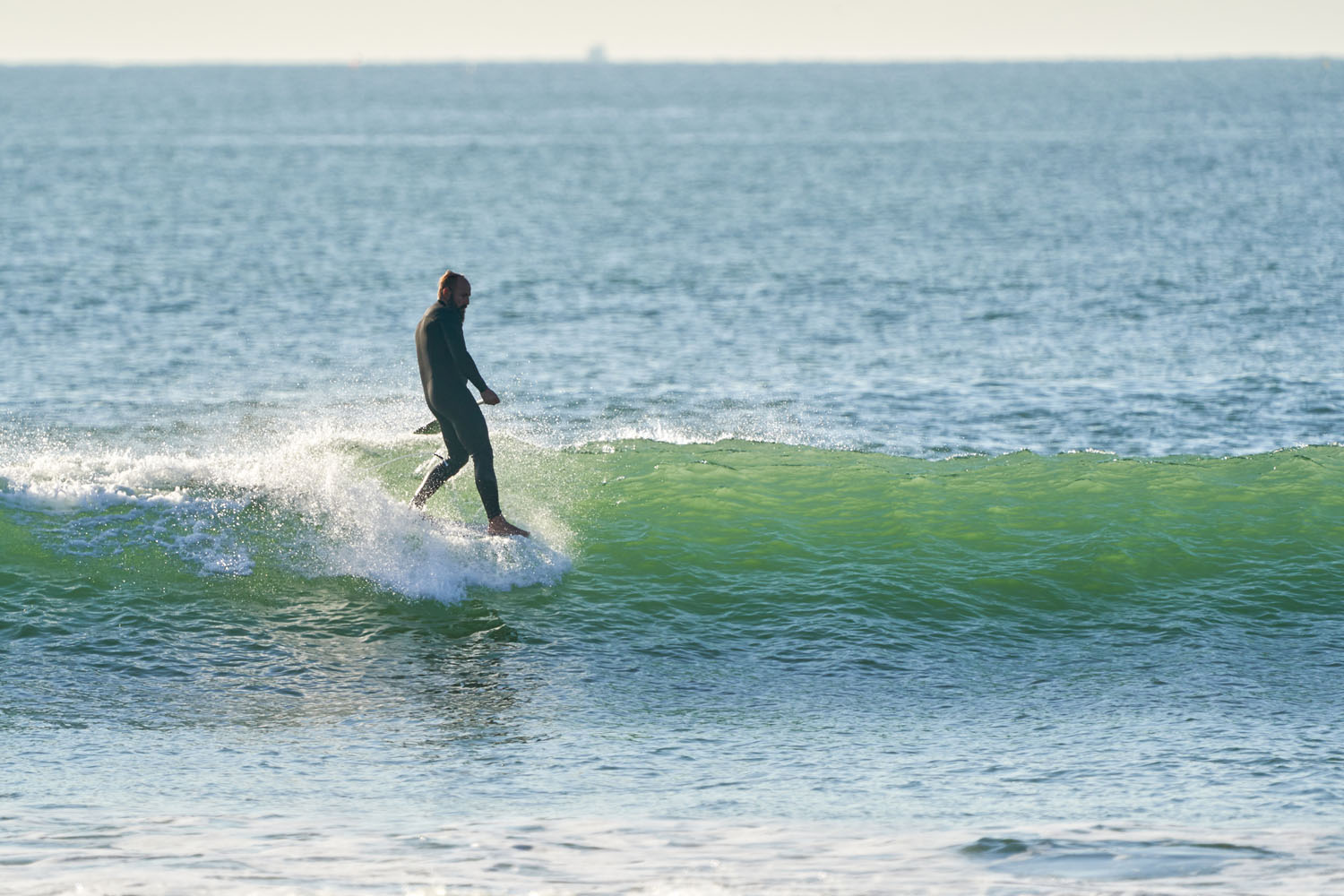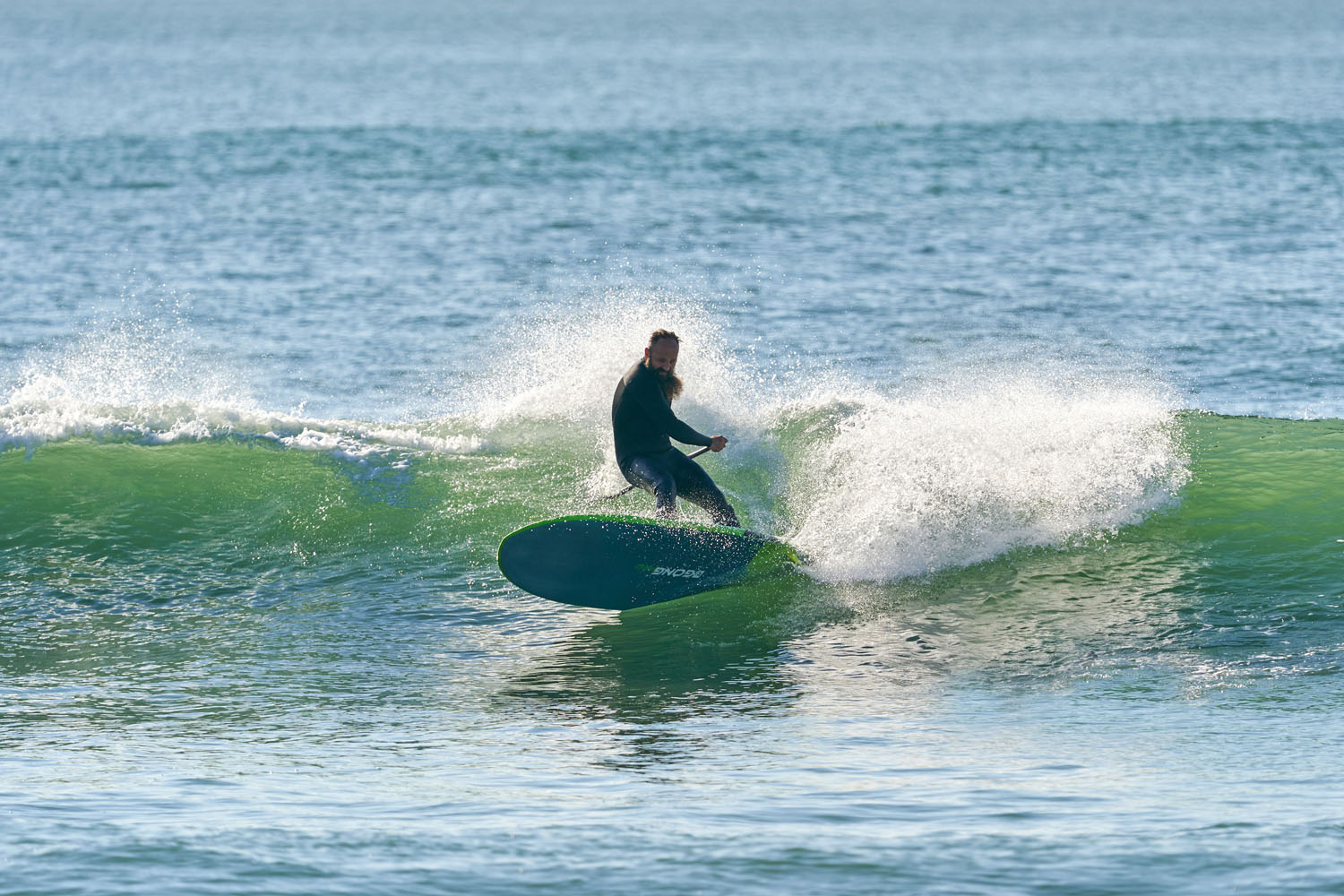GEAR: WHICH FINS ON A NOSERIDER SUP ?

50% of a board’s performance comes from the fins, you will necessarily want to adjust the set of fins to your size, your style, your tastes, or quite simply to test new things…
Some fins promote speed, others turns, others acceleration, others nose hold, etc. There are full descriptions on their own product sheets. A good read by the fire ?

We will find on these boards two main types of fin set-up, single and 2+1:
Single fin, between simplicity and technicality
A single fin can be considered the simplest but also the most technical set-up to surf. It all depends on how you surf and on individual intentions.
The single fin set-up is the one that allows you to give speed to your board without having to change gears, sort of speak. Because it is the set-up that opposes the least resistance and drag. If you like to slide as “simply” as possible down-the-line*, this will be the most efficient fin set-up.
*Which has to be understood by a diagonal trajectory, kind of an infinite bottom turn at mid-wave height which allows to maintain a movement at a constant speed if this trajectory and its placement is perfectly optimized in relation to the energy of the wave. It’s exactly the same reasoning as going down a ski slope, but in the case of surfing, this slope is going to be very short, and to go down indefinitely, you will have to constantly alternate downhill and uphill, or find the perfect line which will maintain this balance which will allow the surfer to maintain this inertia, the famous expression: “down the line”.
On the other hand, if your goal is to tighten your turns as much as possible, you will need to be particularly precise in your trajectories in order to always be well placed in relation to the energy of the wave, and to have a strong stance in order to maintain maximum pressure on your rails since the absence of side fins. It is in this context that we can highlight the fact that surfing with a single fin can be technical, and will call on the experience of the surfer, because your only ally will be gravity.
A single fin set-up is often favored on noseriders, boards on which maximum glide is sought. A sufficiently deep fin allows you to stabilize the tail of your board well at the top of the wave, thus leaving a maximum of time to stay on the nose of the board.

The 2+1 assembly
For 2+1 set-up, a bigger central fin stabilizes the board and lengthens the turns. Larger lateral fins boost cornering speed. We lengthen some and not the others, they are communicating vases: a large central fin with large side fins is too much, your board will be unmanageable.
- The size of US central fins: 6″ to 9” in 2+1 set-up and 8″ to 11″ in single fin set-up (7″ and 10″ being the references for each fin set-up).
The 2+1 fin set-up is the one that will bring the most versatility to the board, in this case we will seek to optimize control and grip once the board is on the rail.






